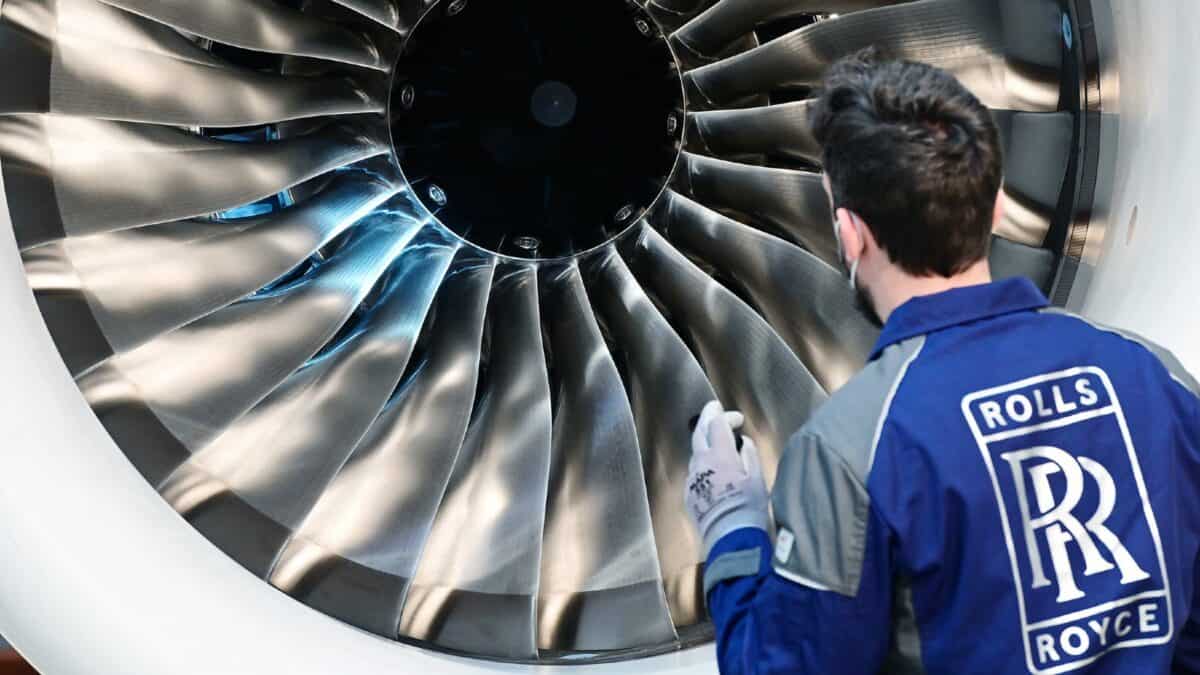According to Warren Buffett, investing well is about buying shares when they trade below their intrinsic value. But figuring this out isn’t always straightforward – take Rolls-Royce (LSE:RR) for example.
After a 200% rally over the last 12 months, the company currently has a market cap of £26bn. It’s clear the engine manufacturer is a very good business, but is it worth that much?
Cash flows
Right now, Rolls-Royce shares trade at a price that implies a total valuation £26bn for the entire company. Investing that in government bonds at today’s prices would return £967m per year.
The business generates £1.25bn in free cash, so it’s actually priced for its cash flows to retract a bit over the next few years. I don’t think this is likely to happen, so I think the stock is currently undervalued.
There’s no guarantee cash flows will remain at current levels. Despite an impressive 2023, Rolls-Royce still has durability issues with its engines to deal with and these are making customers uneasy.
Nonetheless, the firm is aiming for £3.1bn in annual free cash flow by 2027, which implies annual increases of 25%. That would be impressive, but how much is that kind of growth worth?
Intrinsic value
If Rolls-Royce can increase its free cash flows by 25% per year until 2027, the company will produce £10.25bn in free cash between now and then. How much is that worth today to an investor?
In order to earn that amount over the same period by buying bonds, I’d need to earn around £2.56bn per year. The current yield on a four-year UK government bond is 3.72%.
In order to earn £2.56bn per year from a bond with a 3.72% yield, I’d need to invest just under £69bn. So arguably, that’s the fair value of Rolls-Royce today – 163% higher than the current market cap.
That means I believe the intrinsic value of Rolls-Royce shares ought to be something closer to £8.10. The share price right now is £3.10 – a 62% discount to the proposed value.
Risks
In general, investors should expect a better return from stocks than bonds. This is because shares are riskier – a company is more likely to fail to generate excess profits than to go bankrupt.
It’s also worth noting that the bond will deliver its returns sooner than a growing stock. And this is valuable because it allows investors to reinvest and compound their gains more quickly.
This might be especially true of Rolls-Royce. There’s a risk a recession might weigh on travel demand, causing demand for engine servicing to fall and the company’s growth to slow.
It’s not often that I think a stock that has just tripled over the last 12 months is a bargain. But Rolls-Royce shares look like they’re trading below their intrinsic value to me.
Should I buy Rolls-Royce shares?
Rolls-Royce’s management has some ambitious plans for the next four years. Generating the kind of growth needed to make £3.1bn per year in 2027 would be a significant achievement from this point.
Even if the company doesn’t manage this, the stock looks like it might well outperform a government bond over the next four years. So I think investors should consider buying Rolls-Royce shares.








